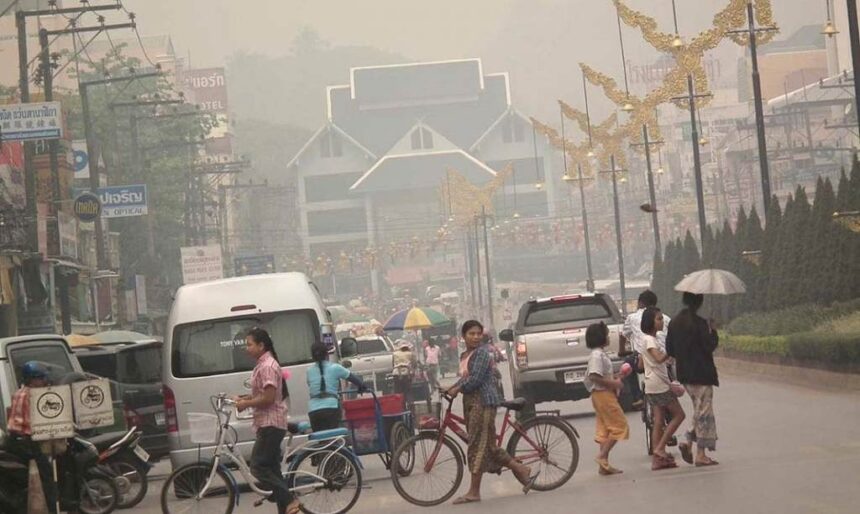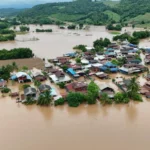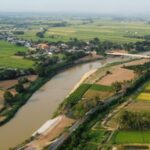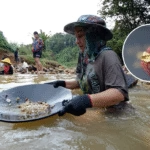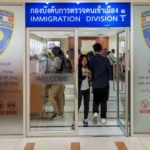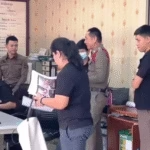Chiang Rai is stunning, with its misty hills and calm rivers. Yet behind the views, serious health risks persist for locals, travelers, and hill tribes. This guide highlights Chiang Rai health issues in plain sight, making action clear and timely.
The most significant pressure points are known—infectious diseases, led by scrub typhus, strain rural families each rainy season. Recent research in northern Thailand has revealed high exposure to scrub typhus in hill tribe areas, with cases increasing in farm and forest zones from June to November. There is no vaccine, and late diagnosis still costs lives.
Air pollution adds another layer. Burning and increased traffic spike PM2.5 levels during the dry season, leading to increased coughing, asthma, and clinic visits. Water and soil concerns also matter, as seen in reports on Kok River health risks from mining. These exposures disproportionately affect children, the elderly, and outdoor workers the most.
Access to care remains uneven. Some villages face long trips, limited transport, and language gaps. Immunization gaps and chronic disease care can slip, while sleep problems and stress rise in rural homes. These health challenges in Chiang Rai affect daily work, school, and household income.
Awareness helps residents plan, guides expatriates and travelers to prepare, and provides health workers with a sharper understanding of risk. Quick action on prevention, early testing, and clean air measures can significantly reduce harm, as illustrated by a quick primer on scrub typhus.
Explore the top Chiang Rai health issues in 2025 — from scrub typhus and air pollution to healthcare access for hill tribes. Learn prevention tips, risks, and real solutions that can save lives.
What follows covers the facts you need. You will encounter infectious risks, air and water hazards, access and cost barriers, as well as patterns of non-communicable diseases. You will also find practical steps, clinic and testing tips, and policy options that can make a meaningful impact in 2025.
Chiang Rai Health Issues You Should Know About
Chiang Rai may appear peaceful, but it has significant health issues. Many people, especially in hill tribe areas, face serious risks from diseases and pollution.
Scrub typhus is a common illness during the rainy season. It spreads from tiny mites found in fields and forests. Without early treatment, it can be dangerous—but bug spray and long clothes can help prevent it.
Air pollution is also a big issue, especially from February to April. Smoke from fires fills the air, making it hard to breathe. People with asthma, heart problems, or even healthy lungs can get sick.
Other problems like high blood pressure and diabetes are growing too. Rural families often live far from clinics, and some don’t speak Thai, which makes accessing care more difficult.
Even small steps—such as clearing grass, wearing masks, and visiting clinics—can protect families and improve health across Chiang Rai.
Infectious Diseases in Chiang Rai: Focus on Scrub Typhus Risks
Scrub typhus remains a significant contributor to Chiang Rai’s health issues. Cases rise each wet season, especially in farm and forest zones. Hill tribe households face the highest exposure due to remote living and outdoor work. Early care prevents severe illness, yet diagnosis is often delayed.
How Scrub Typhus Spreads and Affects Hill Tribes
Scrub typhus is transmitted through bites from infected larval mites, commonly known as chiggers. These mites live in scrub, grassy fields, forest edges, and rice bunds. Work in these areas increases risk. Sitting or lying on the ground also raises exposure.
Evidence from northern Thailand suggests a link between risk and daily routines, as well as terrain. A cross-sectional study of hill tribes found that high exposure was associated with farm labor, forest visits, and living at higher elevations.
The study also noted age and outdoor habits as key factors, which help explain clustered cases in rural communities. See the open-access summary of these findings here: Prevalence of and factors associated with scrub typhus.
Health impacts are clear. The infection starts with fever, headache, muscle pain, and chills. Many patients develop a dark scab at the bite site, called an eschar. Without treatment, severe disease can follow, including pneumonia, confusion, and organ stress. Doxycycline is effective in curing most cases when started early.
The effects on daily life are severe for hill tribes. People miss harvest days and market trips. Traveling to clinics is lengthy and costly due to the hills and distance. Language barriers slow triage and treatment.
Household income drops when multiple members fall ill during peak months. Children and the elderly are at a higher risk due to lower immunity and reduced mobility.
Season and setting shape patterns. Most cases appear from June to November. Rice planting, forest product collection, and hillside weeding align with peak chigger activity. Remote homes near scrub provide ongoing exposure. Simple changes in ground cover and work clothing can reduce bites.
Community-led action helps. Projects in northern Thailand demonstrate that local advisory groups, village discussions, and tailored materials enhance knowledge and care-seeking behaviors.
Recent work has reported strong engagement in areas that report hundreds of cases each year. For an overview, see community engagement around scrub typhus in northern Thailand.
Key takeaways:
- Vector: Larval mites in scrub, fields, and forest edges.
- Hot spots: High areas, farm plots, and village fringes with dense grass.
- Season: Rainy months, with a peak in the late wet season.
- Burden: Lost income, school absence, and delayed care in remote areas.
Steps to Prevent Scrub Typhus in Chiang Rai
Prevention starts at home and on the farm. The steps below reduce bites and improve early detection.
- Clear vegetation: Cut grass and scrub within 30 meters of homes. Keep paths clean.
- Use repellents: Apply a repellent containing 20-30% DEET to exposed skin. Reapply as directed.
- Treat clothing: Wear permethrin-treated shirts, pants, and socks. Tuck pants into socks.
- Dress for fields: Long sleeves, boots, and hats reduce skin exposure.
- Avoid ground contact: Use mats or stools when resting in fields. Do not nap on bare ground.
- Check daily: Look for a new black scab, or eschar, on the areas behind the knees, armpits, waist, and neck.
- Act fast: Fever with outdoor exposure warrants testing. Ask about scrub typhus at local clinics.
- Protect children and the elderly: Wear protective clothing, apply repellent, and keep play areas well-maintained and trimmed.
- Handle laundry smartly: Wash work clothes in hot water and dry them in the sun when possible.
Community actions strengthen protection:
- Village clean-ups before and during the rainy season.
- Field edge maintenance by farmer groups.
- Posters and radio spots in local languages.
- Rapid referral pathways from health volunteers to subdistrict clinics.
- Seasonal SMS or LINE alerts reminding families to check for eschars.
Health workers can add low-cost supports:
- Distribute permethrin kits and DEET at cost during planting months.
- Stock rapid tests, where feasible, are tied to clear treatment paths.
- Train volunteers to spot eschars and fever patterns.
Vaccine research is advancing. Teams in Thailand are building the evidence base for a scrub typhus vaccine, including non-human primate studies and plans for future trials. For updates on this work, see MORU’s program on Rickettsiosis.
Benefits are tangible. Villages keep fields productive. Families avoid hospital stays. Clinics prevent severe cases with prompt doxycycline. These gains ease health challenges in Chiang Rai and reduce household costs during the wet season.
Air Pollution and Environmental Health Challenges in Chiang Rai
Air quality is a core part of Chiang Rai health issues. The dry season brings smoke from crop fires, forest burn scars, and hotspots across borders. The city sits in a valley with hills on three sides. Temperature inversions hold smoke close to the ground. PM2.5 levels rise fast and stay high for weeks.
Evidence is clear. Studies in upper northern Thailand link open burning, terrain, and weather to severe haze and sustained PM spikes. See this review of long-term patterns in the region, which highlights biomass burning and topography as key drivers: Decadal trends in ambient air pollutants in upper northern Thailand. Work focused on Chiang Rai also highlights recurring haze events linked to seasonal fires and regional transport of smoke: A case study in Chiang Rai Province.
Impacts of Seasonal Burning on Local Health
Seasonal burning harms lungs and hearts. Fine particles enter deep airways and the bloodstream. Inflammation rises within hours. Symptoms can appear the same day.
People with asthma or COPD often experience these symptoms first—wheezing, chest tightness, coughing, and breathlessness increase. Children, elders, and pregnant women face a higher risk. Clinics report more visits during haze weeks.
Heart risks rise as well. PM2.5 can trigger arrhythmias, raise blood pressure, and stress the heart. People with coronary disease, stroke, or diabetes face more danger. Even healthy adults may feel headaches, fatigue, and eye and throat irritation.
Local factors amplify exposure. Chiang Rai’s basin traps smoke overnight, then light winds spread it across towns and villages. Farmers burn crop residue after harvest. Maize and rice fields add to the plume. Fires in nearby provinces and across borders add to the smoke on peak days.
Key patterns residents see each year:
- Timing: The Worst months are February to April.
- Peaks: Late afternoons and nights often feel heavy due to inversions.
- Hotspots: Valleys and low-lying villages hold smoke longer.
- Triggers: Field clearing, forest edges, and roadside burns.
You can cut exposure with simple steps. Plan during peak weeks and use layered protection.
- Check AQI each morning. Use a trusted app or local reports.
- Stay indoors when PM2.5 is high. Close windows and doors.
- Use an air purifier with a HEPA filter. Run it in your bedroom.
- Wear a fit-checked N95 outdoors. Cloth masks do not block fine particles.
- Reduce outdoor work and exercise. Shift tasks to early afternoons on better days.
- Set up a clean room. Seal gaps with tape, run the purifier, and rest there.
- Keep asthma and heart meds on hand. Follow your action plan.
- Rinse your nose with saline after spending time outdoors. Use lubricating eye drops if needed.
- Hydrate and eat regular meals. Avoid smoking indoors, from cooking, or from using incense.
- Seek care immediately if breathing worsens, your lips turn blue, or chest pain begins.
Community and clinic actions help protect high-risk groups. Schools can adjust schedules or move sports indoors. Village health volunteers can share mask fit tips and track inhaler refills. Clinics can offer same-day checks for asthma flares and blood pressure spikes during haze alerts.
For public health teams, tracking hotspots and enforcing no-burn days lowers exposure. Support for crop residue collection and mulching can cut field fires. When paired with clear alerts, these steps reduce both symptoms and hospital use.
Seasonal burning will continue to be a driver of health challenges that Chiang Rai faces each year. Prepared homes, informed workers, and active clinics can reduce harm now, while long-term field practices shift over time.
Non-Communicable Diseases and Hill Tribe Health in Chiang Rai
Chronic illness now shapes daily life in many hill tribe villages. Hypertension, diabetes, and depression strain families year-round. These conditions sit alongside infections and air pollution on the list of key health issues in Chiang Rai.
The pattern is clear. Diets are salty and sweet. Work is physical, but rest is short. Clinic access can be hard. Stress runs high when crops fail or debt grows. Studies in northern Thailand report undiagnosed diabetes in hill tribe adults, which raises risks for stroke and kidney disease.
See the findings on undiagnosed T2DM among hill tribe adults aged 30 and over in Science Reports: Epidemiology of undiagnosed type 2 diabetes mellitus.
Community programs are effective when they address local needs and concerns. Advisory boards and village health workers can help bridge language and cultural barriers, fostering trust.
One model describes how community advisory groups support care planning with tribes in the North. See an overview here: A hill tribe community advisory board in Northern Thailand.
Common NCDs Facing Rural Communities
The three most common problems are hypertension, diabetes, and depression. They often appear together and worsen each other.
- Hypertension: Consuming salted foods, instant noodles, and pickled items can raise blood pressure. Long work days, smoke exposure, and alcohol also push numbers up.
Example: A farmer eats sticky rice with salty soup nightly. His pressure climbs, and headaches follow. - Type 2 diabetes: Consuming sugary drinks, white rice, and insufficient sleep can all contribute to elevated glucose levels. Fasting before long trips to clinics also causes swings.
Example: A vendor drinks sweet tea all day at the market. She feels thirsty and tires easily. - Depression: Debt, family separation, illness, and grief weigh heavily. Chronic pain and poor sleep add to risk.
- Example: An elderly woman loses her partner and stops attending village events. She sleeps poorly and eats less.
Simple signs to watch:
- Hypertension: Morning headaches, nosebleeds, blurred vision.
- Diabetes: Thirst, frequent urination, slow wound healing.
- Depression: Lasting sadness, low energy, loss of interest, and sleep changes.
Quick actions that work in rural homes:
- Cut salt by half. Rinse pickled foods before cooking.
- Swap one sweet drink daily for water or tea without sugar.
- Add one handful of greens to lunch and dinner.
- Walk 20 to 30 minutes most days. Use shaded paths.
- Check pressure monthly at the clinic or with the assistance of volunteers.
A fast screen saves time and money. Many adults have no symptoms until damage starts. Hill tribe data indicate that silent diabetes is common, making basic screening a worthwhile endeavor. See the research summary on undiagnosed diabetes in hill tribe adults: Epidemiology of Undiagnosed Type 2 Diabetes Mellitus.
Condition snapshots and simple steps:
| Condition | Common triggers in hill tribe settings | Starter actions |
|---|---|---|
| Hypertension | Salty preserved foods, alcohol, smoke exposure, and stress | Measure pressure, cut salt, limit alcohol, take meds |
| Type 2 diabetes | Sugary drinks, refined carbs, and poor sleep | Screen fasting glucose, reduce sugar, and steady meals |
| Depression | Debt, grief, isolation, chronic pain, short sleep | Talk to a counselor, join group activities, and treat pain |
Mental Health and Sleep Issues in Chiang Rai Villages
Sleep quality is poor in many homes. Night noise, roosters, motorcycles, and storms break rest. Money worries and crop risks keep people awake. Short sleep raises blood pressure and increases the risk of diabetes. It also deepens a low mood.
Depression is common in older hill tribe adults, especially women and those under stress. Village studies in the North highlight high rates and few services. A program outline shows how a tailored depression care model could help hill tribes.
See the proposed care pathway here: Developing a Depression Care Model for the Hill Tribes.
A related study found high depression in adults aged 40 and over, with stress and low income as key drivers: Prevalence of and factors associated with depression in the hill tribe population.
Drivers of poor sleep and mood in rural Chiang Rai:
- Noise and crowding: Thin walls, livestock near homes, late rides on steep roads.
- Worries: Debt, land issues, harvest loss, migration for work.
- Health: Pain from field work, untreated hypertension, and alcohol use.
- Environment: Haze season irritates the airways and disrupts sleep.
What helps right now:
- Keep a set sleep time. Dim the lights one hour before bed.
- Use earplugs or a fan for steady noise. Move roosters away from bedrooms if possible.
- Limit alcohol at night. Avoid caffeine after noon.
- Treat pain before bedtime. Stretch for 10 minutes.
- Try a worry list. Write down tasks, then set them aside.
Access to care matters. Screening for depression in primary care helps catch cases early. A brief conversation in the local language helps build trust. Follow-up by village health volunteers keeps people on track.
Program steps for clinics and NGOs:
- Offer same-day mental health screening with blood pressure checks.
- Train staff to use short mood tools and sleep questions.
- Set up referral lines for counseling and crisis care.
- Open group sessions for elders and caregivers in village halls.
- Provide simple sleep kits. Earplugs, eye masks, and pillow advice.
Better sleep and mood can help reduce other health issues in Chiang Rai. Blood pressure improves. Glucose drops. People return to work and school. With steady counseling access and basic sleep support, villages can cut the burden of depression while improving control of other NCDs.
Healthcare Access, Immunization, and Ways Forward for Chiang Rai
Immunization saves lives in Chiang Rai, but gaps still exist in the remote hills. Travel, language barriers, and paperwork often prevent many families from accessing vaccinations.
These challenges exacerbate ongoing health issues in core Chiang Rai, particularly for stateless and migrant children. While progress has been made, it is crucial to focus on overcoming these final barriers and to ensure steady funding for these efforts.
Improving Immunization in Remote Hill Tribe Areas
Coverage remains uneven in highland villages. Distance and steep roads delay infant visits. Some homes lack phone service, so reminders fail—language barriers and low trust slow clinic use. Stateless children lack identification, which complicates their records. Families move for farm work, and doses get missed.
Qualitative work with hill tribe families reveals repeated barriers, including fear of side effects and confusion about schedules. See interviews on access challenges in northern Thailand in a qualitative study of hill-tribe communities, Thailand.
A recent analysis of Chiang Rai data highlights practical risk factors for missed doses, including mobility and weak follow-up systems. Review these determinants in Determinants of incomplete immunization among hill tribe children in Chiang Rai.
Thailand has several notable successes to build upon. The country’s Expanded Program on Immunization (EPI) is effective at the national level. Village health volunteers play a crucial role by reaching deep into small communities.
Solar-powered refrigerators help maintain the cold chain in clinics that are off the grid. Mobile teams provide vaccinations during market days and school visits, which helps improve coverage in both the valleys and the upland areas.
What works on the ground:
- Door-to-door mapping: Volunteers list all pregnant women, newborns, and individuals who have recently moved.
- Market-day outreach: Nurses vaccinate near stalls, with signs in local languages.
- School-based catch-up: Teams administer missed doses for children aged 4 to 12.
- Stateless-friendly intake: Record visits without ID, then link to civil support.
- Clear messages: Short, translated cards show dose names and dates.
Common pain points still limit results:
- Late first contact, when mothers return to the fields quickly.
- Poor tracking of families that cross district lines.
- Rumors after a fever or soreness post-shot.
- Data gaps exist due to the use of paper records and the loss of booklets.
A practical fix is local governance. Community advisory boards (CABs) give structure, trust, and feedback loops. A 2024 study describes how CABs in the North improved engagement, language access, and planning with hill tribe groups. See details in A hill tribe community advisory board in Northern Thailand.
Suggested CAB model for hill tribe health in Chiang Rai:
- Membership: Village head, women’s group lead, youth rep, health volunteers, clinic nurse.
- Scope: Immunization calendars, outreach routes, rumor tracking, and consent scripts.
- Cadence: Meet monthly before paydays and harvest moves.
- Tools: A simple dashboard with due doses, stock, and missed follow-ups.
- Language: Translate all materials and meeting notes into local languages.
- Microgrants: Small funds for transport, battery-powered coolers, and banners.
- Escalation: Establish a clear line of communication with district teams for extra mobile days during outbreaks.
Measure what matters to keep momentum:
- On-time DTP and MMR coverage by village.
- Missed-visit rate after first dose.
- Median days from birth to first contact.
- Follow-up completion for mobile families.
Key actions for 2025:
- Expand market-day and school sessions in high-mobility zones.
- Add SMS and paper reminders in two languages per village.
- Train volunteers on pain and fever counseling to reduce hesitancy.
- Roll out CABs in border subdistricts with shared dashboards.
These steps help quickly reduce gaps and align with local routines. They also address significant health challenges that Chiang Rai faces, such as preventable outbreaks and the high cost of travel. Strengthening immunization systems protects the health of the hill tribes in Chiang Rai and helps build long-term trust in healthcare services.
Conclusion
Chiang Rai health issues are clear and actionable. Scrub typhus peaks with field work in the wet months. Haze and PM2.5 pollution strain the lungs and hearts during the dry season. Non-communicable diseases burden families year-round. Access gaps persist for remote and hill tribe communities, with language barriers and travel costs exacerbating delays.
The following steps are practical and can be implemented by residents. They can trim back shrubs near their homes, use repellents, and check for eschars.
Households should monitor the Air Quality Index (AQI), establish a designated clean room, and ensure they have properly fitting N95 masks available. Individuals with hypertension or diabetes can reduce their salt and sugar intake, take daily walks, and keep their medications readily accessible.
Parents should stay updated on vaccination schedules through village outreach and visits to the market. Public health teams can assist by providing mobile clinics, conducting simple screenings, and ensuring consistent follow-up care.
Travelers and expats should prepare for the season and setting. Pack DEET and permethrin-treated clothing for farm or forest visits.
Monitor the AQI in late dry months and plan indoor activities when smoke levels build. Keep your routine medications and an inhaler, if needed. Seek early testing if a fever develops after outdoor work.
Professionals and NGOs can press for stronger alerts, rapid tests, and targeted outreach. Community advisory boards improve trust and follow-through. Better surveillance, clean air tools, and clear messages save time and money. Policy support for no-burn periods, as seen in Chiang Rai’s PM2.5 control zone declaration, can reduce peak smoke days.
The path to better health is a shared journey. To enhance the well-being of hill tribes in Chiang Rai, it’s essential to prepare for infectious risks, reduce exposure to pollution, and effectively manage chronic diseases.
Bridging the gaps in distance and language by engaging local voices and maintaining consistent communication is essential. By adopting simple habits, implementing faster testing methods, and utilizing innovative outreach strategies, we can improve health outcomes within the community. The work is ongoing, the progress is evident, and the community is ready to take action.





